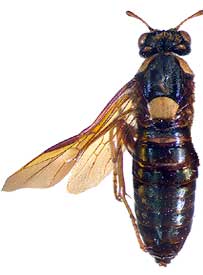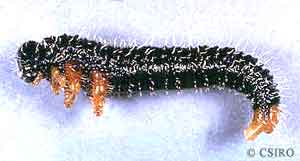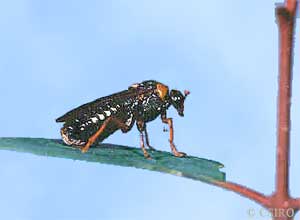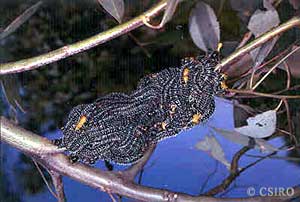
|
PERGIDAE Pergid Sawflies |
|
| ||||||||||||
|
Members of this family are known as sawflies and the larvae are commonly call spitfires. Sawflies are the most primitive of the hymenoptera and do not have the characteristic wasp waist which is seen in ants and wasps. These insects are called sawflies because the female is equipped with a saw-like ovipositor, which is used for sawing slits in plant material into which she lays her eggs.
Adult sawflies are not often seen but the larvae are conspicuous, resembling hairy caterpillars and can be seen on many native plant species.
The larvae are often seen in clusters during the day on eucalypts and are known to flick their abdomens and exude a toxic substance when disturbed. At night their disperse over the host plant to feed on the leaves and have been known to completely defoliate trees when they occur in large numbers. The larvae pupate in the soil during the summer months and emerge in autumn. Masses of pupae can sometimes be found at the bases of trees that have been heavily attacked.
For more pergid sawfly species visit the Australian Insect Common Names - Pergidae section found here. |



